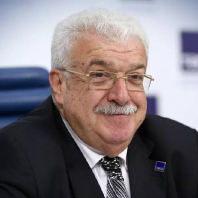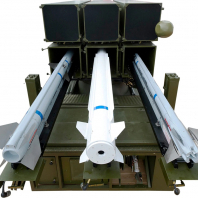Eiffel-by-Night Sign
 dok_zlo — 21.11.2024
dok_zlo — 21.11.2024

Пополнил список поэтично названных симптомов
A 50-year-old man presented with a 1-year history of progressive headaches and nausea. On physical examination, neck stiffness and dysmetria in both arms on finger-to-nose testing were noted. Results of a lumbar puncture revealed an opening pressure of 31 cm of water (reference range, 7 to 20), and cerebrospinal fluid studies were notable for elevations in the protein level and immunoglobulin index. Subsequent contrast-enhanced, T1-phase magnetic resonance imaging (MRI) of the head showed thickened dura with central hypointensity and peripheral enhancement at the posterior falx and cerebellar tentorium — a finding known as Eiffel-by-night sign (coronal view). Eiffel-by-night sign is thought to represent active inflammation of chronic pachymeningitis and may be seen in the context of inflammatory, autoimmune, neoplastic, or vascular conditions. A dural biopsy showed a lymphoplasmacytic infiltrate with IgG4-positive plasma cells. The serum IgG4 level was elevated. Whole-body imaging showed no other organ involvement. A diagnosis of IgG4-related hypertrophic pachymeningitis was made. Treatment was initiated with methylprednisolone pulse therapy for 5 days and was then transitioned to a slowly tapering dose of oral glucocorticoids. At a 2-month follow-up visit, a repeat MRI of the head showed improvement, and at 6 months, the patient’s headache had abated. A maintenance dose of a glucocorticoid was continued.
Authors: Kundian Guo, M.D. , and Zhen Hong, M.D., Ph.D.
Published November 16, 2024
N Engl J Med 2024;391:1936
DOI: 10.1056/NEJMicm2408573
VOL. 391 NO. 20
Почитать - 'Eiffel-by-Night': A New MR Sign Demonstrating Reactivation in Idiopathic Hypertrophic Pachymeningitis
DeepL Переводчик
Крепкого здоровья!
|
|
</> |

 Преимущества теплообменников Ридан в инженерных системах
Преимущества теплообменников Ридан в инженерных системах  Смена № 2 \ 1927
Смена № 2 \ 1927  Уволен
Уволен  Кражи, шпионаж, отупение. О плодах бездумной цифровизации
Кражи, шпионаж, отупение. О плодах бездумной цифровизации  Планы продажи Египту зенитных ракетных комплексов NASAMS
Планы продажи Египту зенитных ракетных комплексов NASAMS  Этимология слова Юда в слове Обоюдный
Этимология слова Юда в слове Обоюдный  Вождь мирового пролетариата одобряет геноцид русинов
Вождь мирового пролетариата одобряет геноцид русинов  Сталина на них нету!Почему не хватает нового "мяса" для ВСУ?Украли! Но не
Сталина на них нету!Почему не хватает нового "мяса" для ВСУ?Украли! Но не  Портреты безумия: 12 фото пациентов самой печально известной психиатрической
Портреты безумия: 12 фото пациентов самой печально известной психиатрической 



